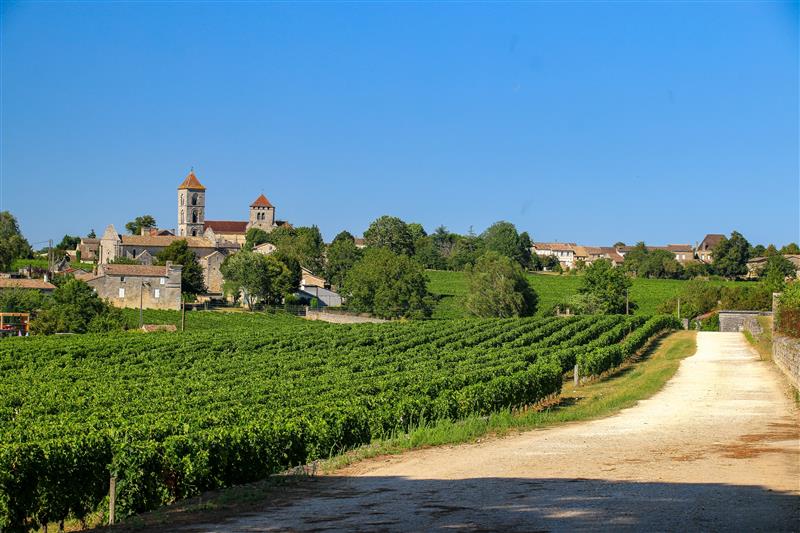Chances are your favorite red wine is dry. I know that not because I have a crystal ball, but because pretty much every popular red wine is dry. (I urge you to discover the many delights of sweet red wine, but not right now.) Before we get into types, let’s address the big question: What makes a wine dry?
Wines are called dry when they have comparatively low amounts of residual sugars, meaning they taste less sweet (technically below 1%, or nine grams of sugar per liter). All wines would be dry if fermentation weren’t halted or they were back-sweetened. Yeast will “ferment until dry,” meaning it will gobble up all the sugar there is, no crumbs left. This dry descriptor applies to all types of wine – sparkling, white, red, and rosé. The first time dry appears in writing referring to wine was in Richard Ames’s 1691 poem “The Last Search After Claret, &C.” in which the narrator is looking for a red Bordeaux but is offered sweet port instead:
So not knowing what Murder and Blood might ensue,
In hast paid for our Drink, and so timely withdrew
Resolving the dull tedious search to give o’re,
And never inquire for Old Dry Claret more.
Luckily for us, there’s tons of amazing dry red wines available. Therefore, I’ll provide an overview in order of driest to…regular dry. (Wines above 3% sweetness are considered “off dry” or semi-sweet, and therefore won’t make the cut.) You’ll notice that these wines have more in common than a lack of sweetness; they’re also higher in tannins and alcohol content — which means they tend to age beautifully, becoming sublime as the years go by.
Sangiovese, the desert of red wines

Italy finishes first in dryness with sangiovese – a name derived from the Latin for “blood of Jupiter.” This bone-dry grape is used to make some of Tuscany’s most famous offerings: Chianti, Brunello, and Montepulciano. These wines aren’t particularly floral or big; they taste of fresh red fruit like strawberries and sour cherries, with a hint of spice and structured tannins. Cherished in my memory is a vintage Chianti Classico, predominantly made with sangiovese, which I shared with friends at a dinner party. It came out of the bottle a dusky brick red, smelled of violets and roasted tomatoes, and tasted of cherries with a hint of coffee and allspice. Its tannins were like black tea. The no-brainer food pairing is sangiovese wines with Italian cuisine, particularly dishes which are grilled, assertively spiced, or tomato-based.
Tempranillo, Spain’s heavy hitter

Next up is tempranillo, used to make Spain’s most famous red wine, Rioja. Because many of these wines are aged in oak, they offer flavors that extend beyond sangiovese’s red fruit: notes of dried fig, tobacco, and cedar will emerge from the best Rioja. Wines made with tempranillo have a medium-full body, bracing acidity, and noticeable tannins. This is all to say that pairing this wine with burgers or steak is never a bad idea. Tempranillo also plays well with lamb because of its earthy fruit profile.
Cabernet sauvignon

Big, bloody, and bold cabernet sauvignon is next on the dryness meter. The backbone of Left Bank Bordeaux Rouge, cab sauv is the world’s most popular grape — finding perhaps its most beloved expression in wines made in California’s Napa Valley. These are absolutely massive wines — the definition of full-bodied — packed with dark red and black fruit, cedar, iron, baking spices, and graphite minerality. With tannins to spare and zingy acidity, this is the wine to pair with red meat, no matter which animal it comes from or how it’s prepared. At some point in your life, do a taste test comparing cabernet sauvignon wines from around the world: Argentina, Australia, North Coast and Napa Valley California, France, and Spain. Also, please invite me over when you do.
Pinot noir

If cabernet sauvignon pegs the needle on heft, pinot noir’s softness and medium body makes for a welcome departure. I reserve the right to change my mind, but the top two best wines I ever had were both pinot noir from Burgundy: a Charmes-Chambertin Grand Cru, which was like sitting in a rose garden after a soft rain; and a Vosne-Romanée, redolent with cooked cherries, black currant, leather, and morel mushrooms. Pinot noir wines are still considered dry, but we’ve come a long way from Sangiovese’s arid profile. There’s still a decent amount of tannins, but it’s pinot noir’s acidity that makes it the skeleton key of all wine-and-food pairings. You can (almost literally) serve pinot noir with everything, from grilled tuna to roast duck to liver paté. Like cabernet sauvignon, pinot noir has also been utilized to great success in America; try one from Oregon’s Willamette Valley – they’re consistently wonderful.
Syrah: the last in the dry line

Last, but certainly not least, is syrah — a gorgeous varietal used in France’s Rhône region and, well, just about everywhere else (in Australia it’s called shiraz). Wines made with syrah are very nearly medium-dry, but not quite. Single varietal syrah wines can be purple-black, intense, and earthy. I love syrah’s pervasive black pepper taste, as well as the dark plum, milk chocolate, and tobacco aromas and flavors. Since these wines have a lot of personality, pair them with game meats, spicy pork, or lamb korma.




